Sometime you have to tell Tactical Ted to take a hike – the story of it’s OK to look at the holster when you are holstering.
We all know a Tactical Ted. He’s the dude that is yelling tactical truisms when you are on the range. DON’T LOOK AT THE HOLSTER, KEEP YOUR FOCUS DOWN RANGE ON THE BAD GUY. YOU HAVE TO KEEP BOTH EYES OPEN OR YOU’LL MISS HIS BUDDY. RELOAD AT ARMS LENGTH TO KEEP YOUR FOCUS ON THE BADGUY.
Now, someone, somewhere instilled this stuff in Ted’s brain housing group like the importance of brushing your teeth, chasing girls, and drinking beer. Ted screams it at every opportunity. It is a way of life to Ted to the point that the takes joy in screaming it at his student’s like the sadistic sensei from the Karate Kid. (the good one, not the crappy PC remake). Let’s examine a few things, shall we?
First off, the whole “DON’T LOOK AT THE HOLSTER” thing? Look at the holster if you want. It’s ok. I’ll go as far as telling you that bad things aren’t going to happen in that half second that you look down to ensure that the gun goes back in the holster. Remember, there’s no race back to the holster. These Instagram dudes that post the videos from the two yard line? Yeah, you’ve seen them. They are at the two yard line. They draw and put two rounds (supposedly) somewhere on a realistic bad guy target in a blinding speed. They then jerk the gun back, bobs their heads back in forth like the plastic dog in the back window, and jam the gun back into the holster? Mongofail. There is no race back to the holster. None. If/when I go back to the holster, I’m doing it on my terms. I have either A- put a bad guy down, B- holding one that has given up at gunpoint or C- I’m holding an unknown trouble such as a doorway or the like. Completely no race back to the holster. In most of those circumstances, another officer is going to have a gun out, when I go back to the holster. Guess what? I won’t die if I need to look at the holster for that half second to make sure it goes in. Tactical Ted is wrong again. In 21 years of LE, I can think of MAYBE one instance where I might need to holster up in a hurry. Only one.
KEEP BOTH EYES OPEN OR YOU’LL DIE. Yeah, no. Ted often forgets here that the most important thing here is……….wait for it………putting bullet mass on target. Yep, not reading an eye chart. Yelling at people to keep their eyes open if they are having vision problems is negatively effecting their ability to put bullet mass on target. Or maybe they are lazy and don’t want to put the time in learning to shoot with both eyes open. Who cares. Most people that I know that don’t shoot with both eyes open do so because of their vision. And I’m good with it. My job as an instructor is to teach them to hit stuff as fast as they can. The dudes/dudettes that are just being lazy or resistant to a better technique? Me yelling at them over their eyes isn’t going to help them or me. As far as missing the bad guy’s buddy, that’s why we scan before we holster. You know, scan and actually look at stuff instead of the range theatrics of jerking the gun back, bobbing the head back and forth, and jamming the gun in the holster.
RELOAD THE PISTOL AT ARMS LENGTH OR YOU’LL DIE. This one I have a bit of problem making fun of. I went to a distinguished school by a great instructor. He teaches this. The instructor, who’ll we’ll anonymously call Flint, is an all around great guy. He still teaches to load the gun at arms length. At the end of the class, he was again a class act. He caught me in the shoot house and thanked me for trying to do stuff his way. Class act all the way around. But, I can put it on the timer, under stress and load the gun faster pulling it back. More over, I can put students on the timer and it’s faster. Your dentist doesn’t work on you at arms length, unless you have really bad chronic halitosis. Your dentist works on you up close, where he has power and dexterity. The dexterity to drive that pick thingy through the top of your head from a molar. KEY POINT- That half second that you look at the magwell during the reload? You won’t die. Ideally, we don’t want to stand out in the open and reload the gun at slide lock that we practice on the range. We want to be moving, or behind cover/concealment.
We all know Tactical Ted. It is far worse for many of us when it is SGT/LT/CAPT/MAJ Tactical Ted. The next time you see Ted, remind him that putting fast hits on target is what matters. Can you/should you train to shoot with both eyes open? Yes, but it isn’t the end of the world if you can’t. Can you/should you train to be able to holster without looking at the holster? Best I can say is OK. In a perfect world, yes. But, I’ve missed the holster before while working the street. Yeah, holster is in the same place, but not the same angle because of how my body is positioned behind cover. I know of no one who has died from taking that half second to look at the holster on the way back, and beings there is no race back to the holster, this surely pisses Ted off for some reason. Can you/should you train to load the gun at arms length? No. It is faster to pull the gun back and load it. I can’t find any documentation of any armed citizen or copper dying because they pulled the gun back to load it.
Don’t be a Tactical Ted. Be Specific. Be Fast. Be Accurate. Pay attention to the things that matter. Hitting stuff fast. Putting the gun in the holster like there is no race.

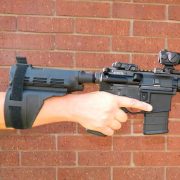
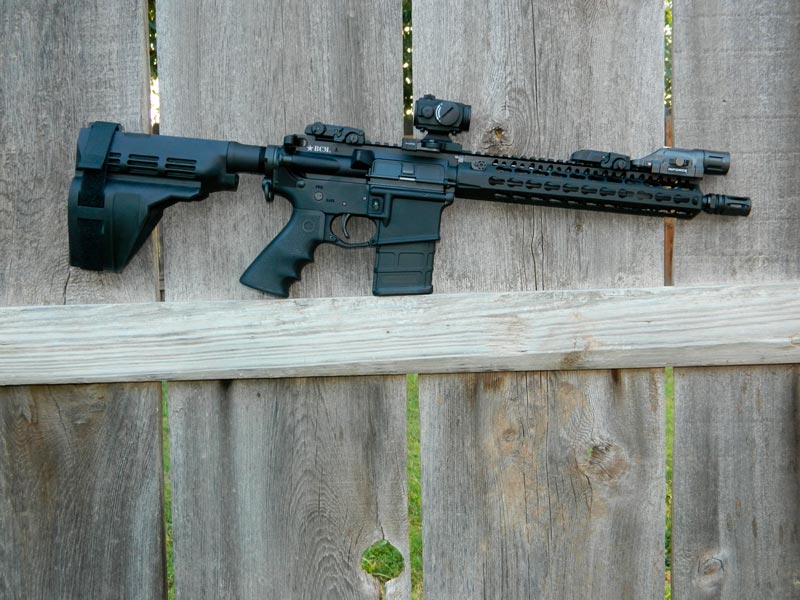
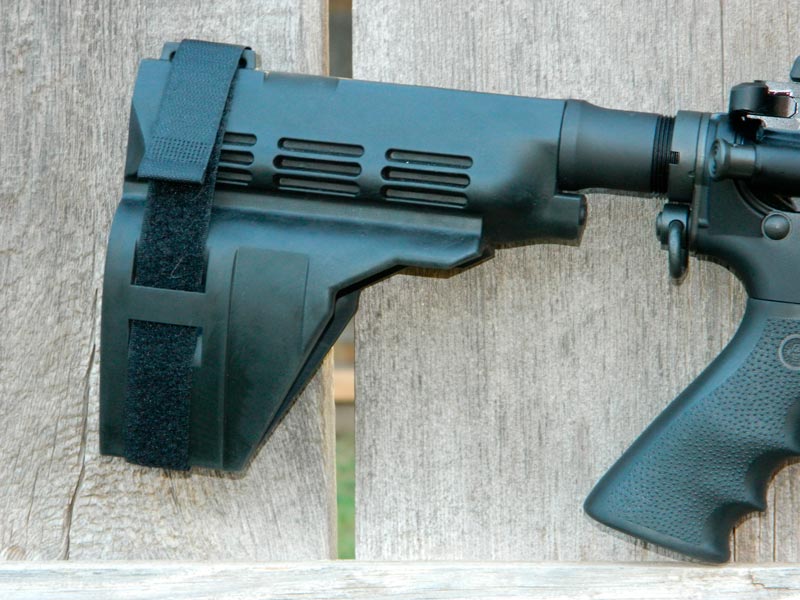
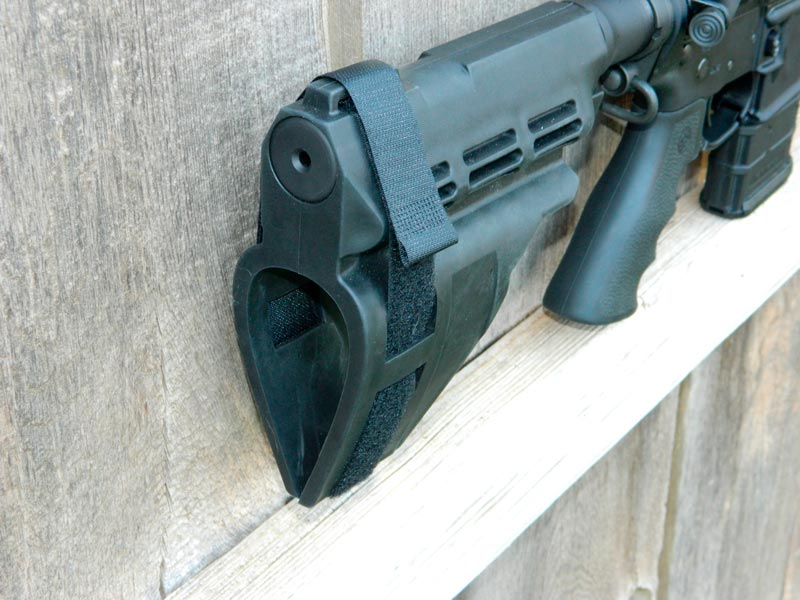
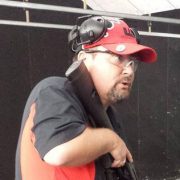

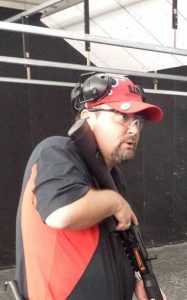
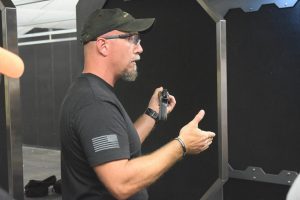
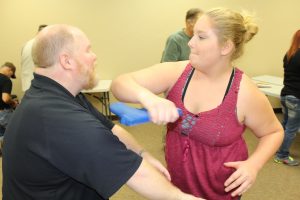
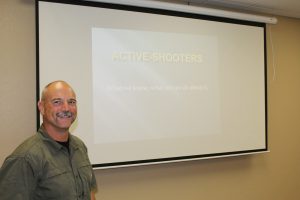
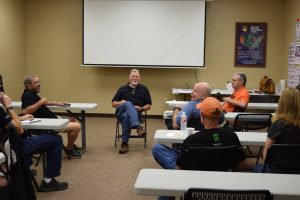
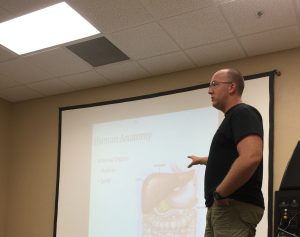

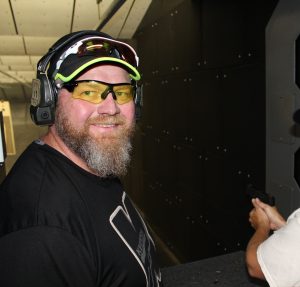
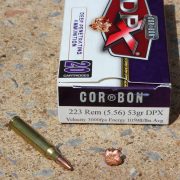
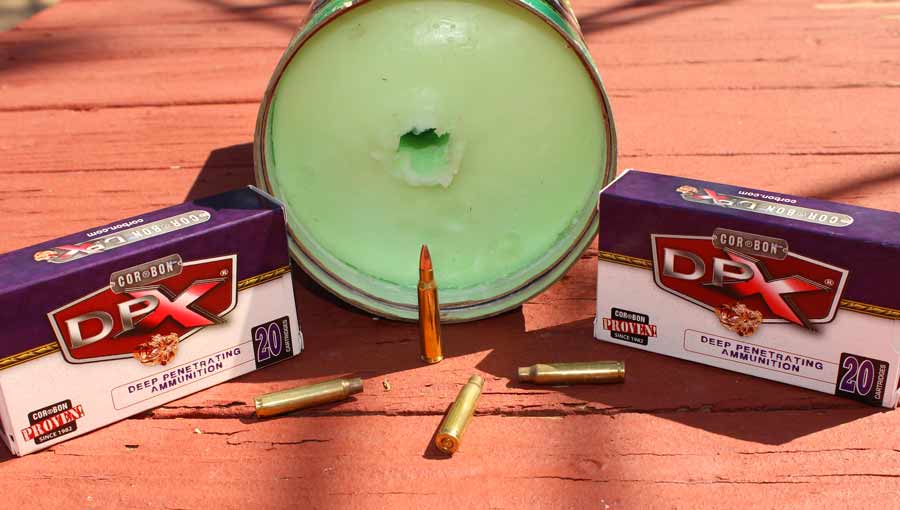
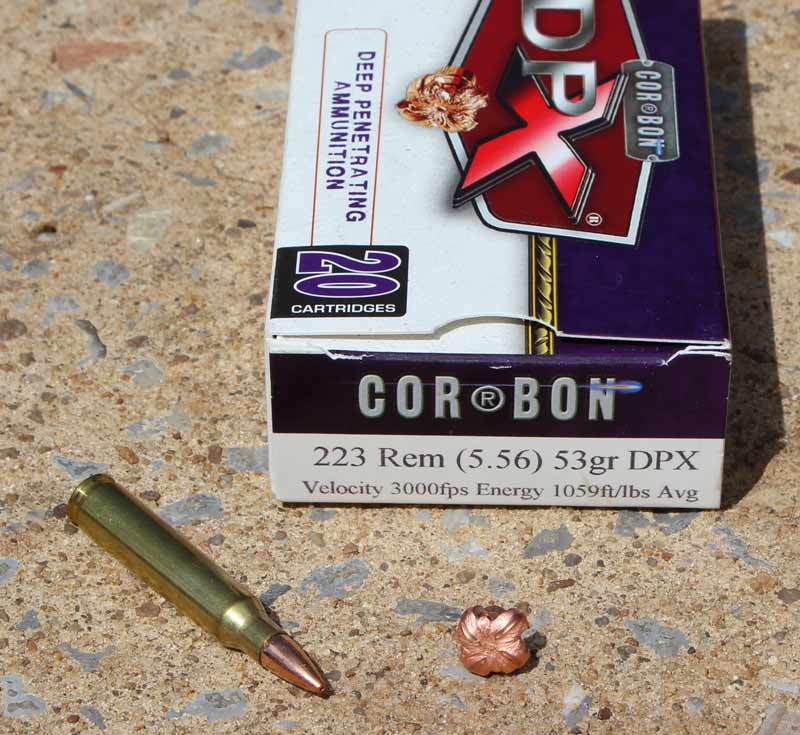
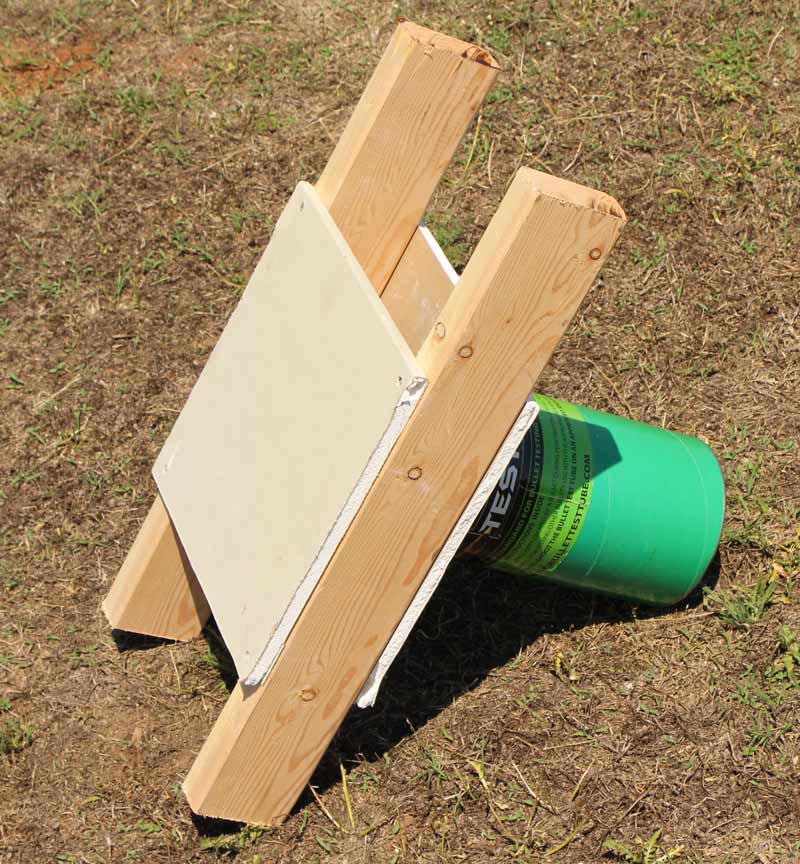
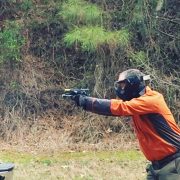

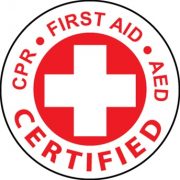
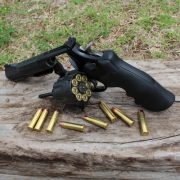
 In the mid 90s, I decided to consolidate calibers. The choice was between: 9mm and. 40 caliber. I sold or traded everything but .40 caliber guns, ammunition and accouterments. The deciding factors were that I couldn’t tell much difference in recoil between them and .40 caliber brass and bullets are larger and therefore easier to handload for my gangly, lower primate fingers. After a few decades of creeping toward decrepitude, I most definitely notice the difference in recoil between the calibers.
In the mid 90s, I decided to consolidate calibers. The choice was between: 9mm and. 40 caliber. I sold or traded everything but .40 caliber guns, ammunition and accouterments. The deciding factors were that I couldn’t tell much difference in recoil between them and .40 caliber brass and bullets are larger and therefore easier to handload for my gangly, lower primate fingers. After a few decades of creeping toward decrepitude, I most definitely notice the difference in recoil between the calibers.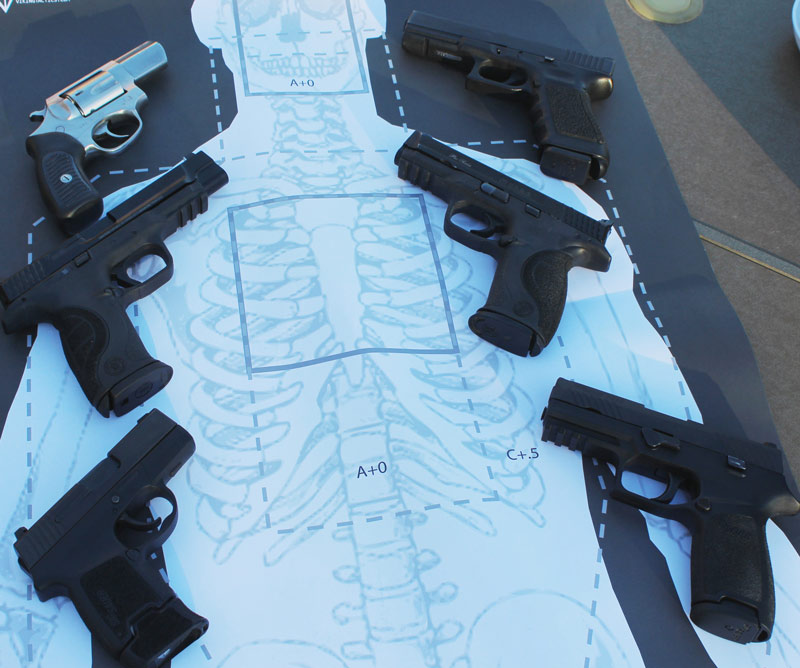 Specifics
Specifics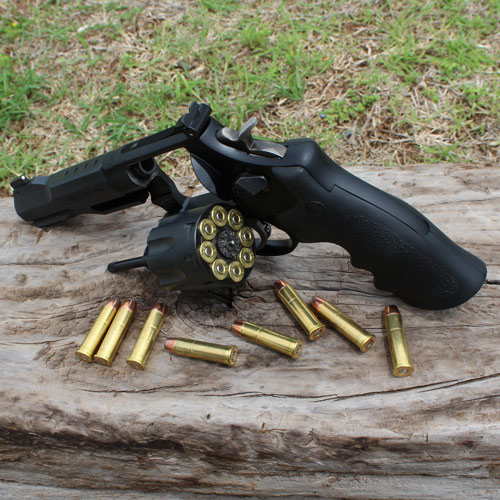 There is little to be discussed with Glocks, M&P’s and P320’s. They’re well established and known to work well. They will be as trouble-free as anything a novice gun guy or gal could hope for.
There is little to be discussed with Glocks, M&P’s and P320’s. They’re well established and known to work well. They will be as trouble-free as anything a novice gun guy or gal could hope for.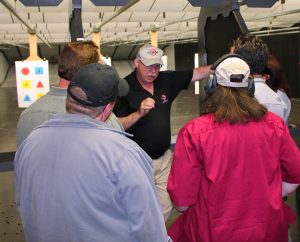
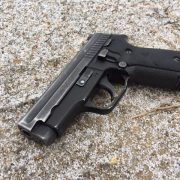

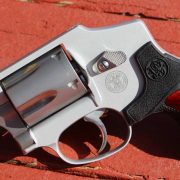

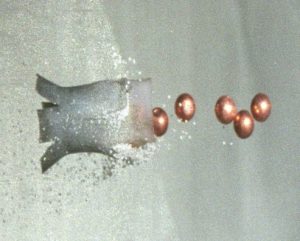
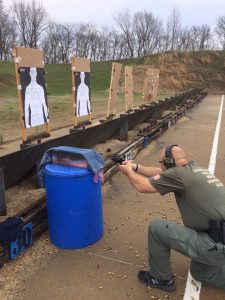
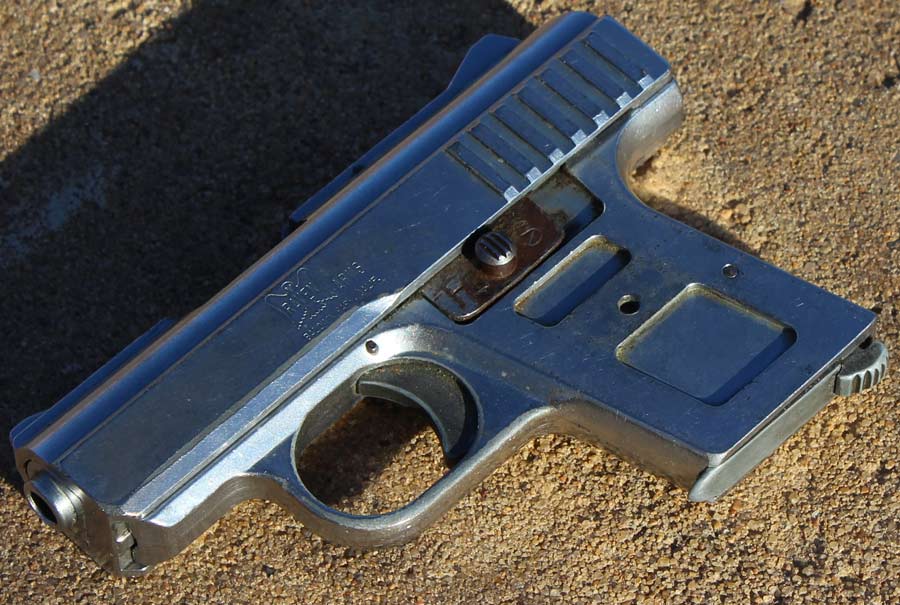
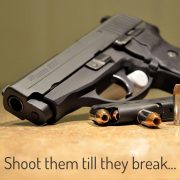
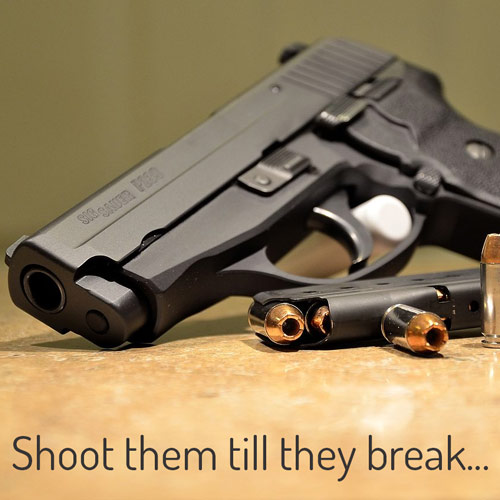 Gun parts. Shoot them till they break.
Gun parts. Shoot them till they break.